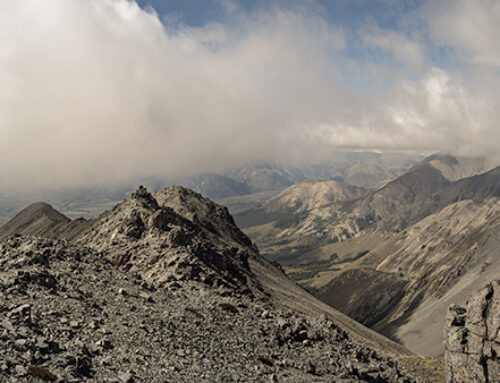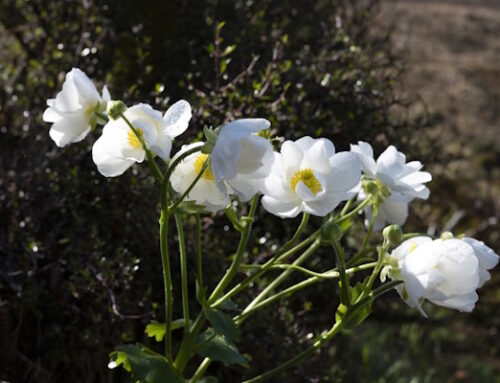A Raptor-ous Experience
Leader: Richard Jones
Date: 17 February 2024
How many Field Trips start with a classroom examination? Not many, I bet. Nevertheless, Richard & Chris, Sheryl, Sue, Denise, Nadine, Rebecca, Francie, Peter & Annie and Robert found themselves in a small classroom facing a slightly intimidating examination of their knowledge of raptors.
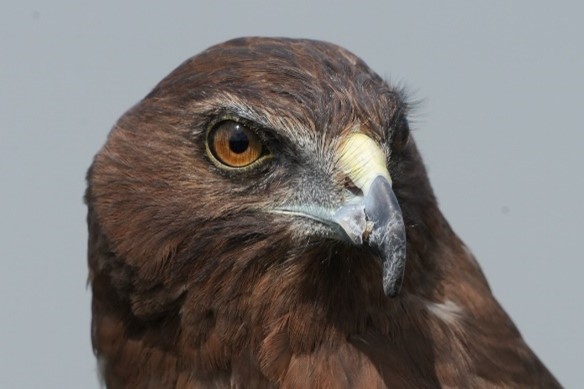
Can you define a raptor? How many raptors are there in New Zealand? What is the largest raptor in New Zealand? What is the Maori name for the Morepork and is it native, endemic, or introduced? Which raptor prefers its meals pre-killed? … and so on. Perhaps not surprisingly, most of the group could answer most questions. (And if you can’t, see the websites below for answers). But the classroom was not only for an exam. There followed an enlightening lecture on raptors – their history, characteristics, behaviour and vulnerability – now that their land is full of humans and their mechanical toys.
While this information can be gleaned from a Google search, it is very different when it is embellished with stories of actual experiences. The NZ Raptor Trust in Timaru, chaired by Ron Lindsay, provides and cares for sick, injured and orphaned raptors until they are fit for release back to their natural habitat. Ron’s enthusiasm for raptors was contagious, making his talk not just information, but an introduction to his animal family.
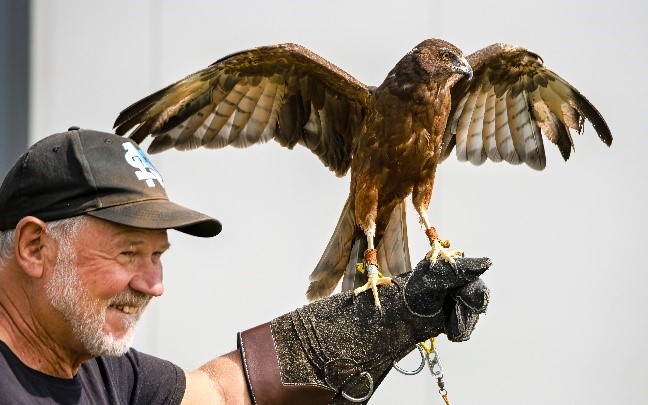
The highlight of the trip was the opportunity to be up-close-and personal with Prince and Tom, two swamp harriers (kāhu) that, although recovered from injuries, has made The Raptor Experience their home. Everyone had the opportunity to have Prince sit on their arm. I’ve always been impressed with the strength of people holding their arm out at right-angle with a giant bird perched on their wrist. Surprise, surprise, despite being over two feet in length, with a wingspan getting toward a metre and a half, an adult swamp harrier is … well … er … as light as a feather! What a marvel of natural engineering.
As well as learning how light a big bird of prey can be, (I suspect an Albatross might be much heavier), we all learned an important tip when having a raptor on your wrist – keep your wrist as high as your shoulder because they like to perch on the highest point. If your shoulder is higher, they will climb up to sit on your shoulder. (Not only leaving a trail of puncture marks in your arm but you’ll end-up with a very scary beak just by your eye-line!)
Unless you are very fortunate, most opportunities to photograph a raptor are from below, at considerable distance. The Raptor Experience provided the opportunity to photograph these wonderful birds at eye level from just a few feet away. Not only could everyone obtain glorious close-ups, some of which are displayed here, but it was possible to capture exciting images of dynamic action as the bird flew to its perch.
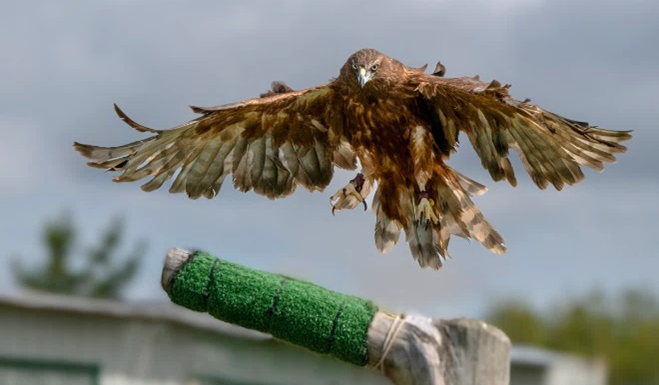
Perhaps for some, the idea of a 5-hour round trip for an $80, 90-minute encounter with some birds might not be exciting. The experience of everyone on this trip was that the encounter was a memorable day out that made NZ’s raptors much more treasured. There was also the bonus of a great lunch at Harlau House Café, the vast fields of sunflowers outside Timaru, and a stroll around Otipua Wetland and Saltwater Creek where a limited range of wildlife provided even more photo opportunities.
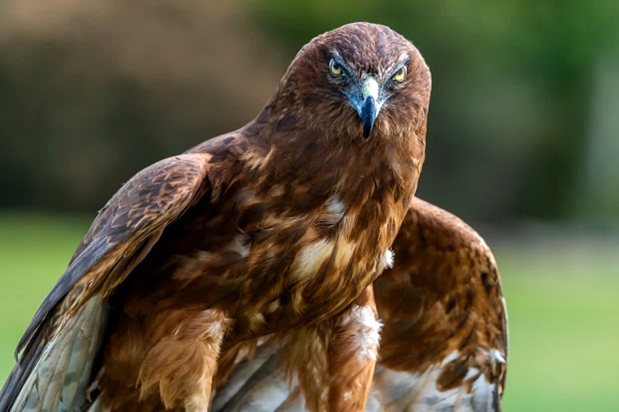
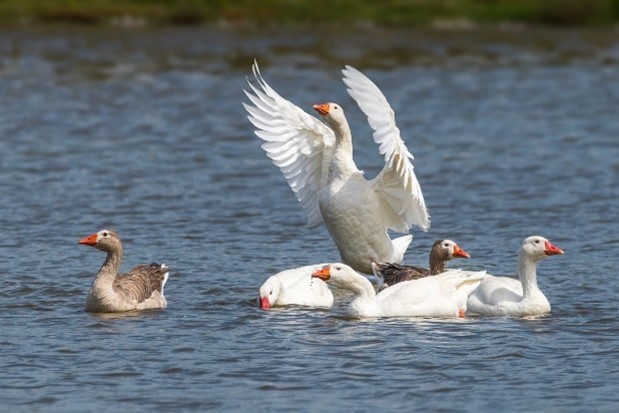
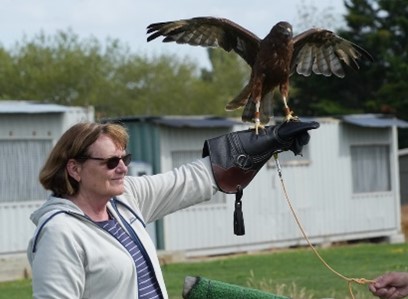
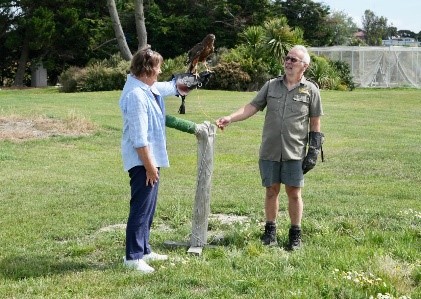
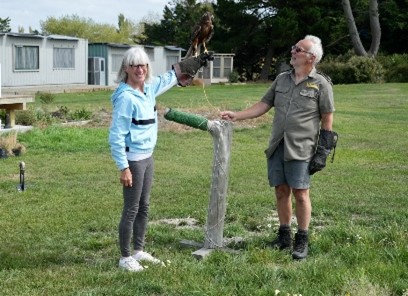
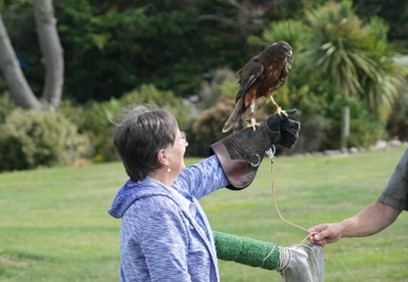


Some sources of information about raptors:
https://nzraptor.org/
https://trust.nzraptor.org/aboutus/
https://www.wingspan.co.nz/
https://teara.govt.nz/en/birds-of-prey
https://nzbirdsonline.org.nz/group-search?field_search_genus_name_value=Raptors&field_search_family_name_value=Raptors&field_search_other_groups_value=Raptors
Report by R. Green
Photos provided by Richard & Robert

